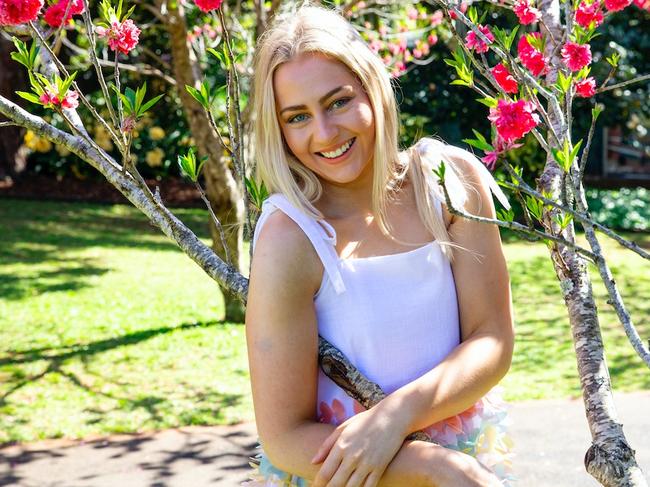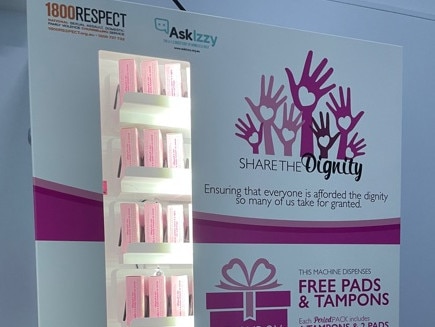Research reveals almost a quarter of Aussie women are using DIY sanitary products
New research suggests up to one in four Aussie women are resorting to DIY methods to manage their periods.
SmartDaily
Don't miss out on the headlines from SmartDaily. Followed categories will be added to My News.
Almost a quarter of Australian women are using items such as toilet paper or socks to manage their period as cost of living pressures put sanitary products beyond their financial reach.
New research by social enterprise Hey Girls reveals period poverty is a growing concern for women, with many forced to choose between food and other necessities and safely menstruating.
“When you’re down to your last $20, of course you are going to spend it on food for the kids rather than period products,” says Hey Girls co-founder Bec Lovely.
“Women are making do with completely inappropriate things like socks or wads of toilet paper or tissue (to manage their period). Some people will go without anything.
“If the cost of living keeps skyrocketing, we will see more and more women struggle to afford appropriate period products.”
THE IMPACT
In addition to makeshift period products, Lovely says many women resort to using the same pad or tampon for far longer than recommended, putting themselves at risk of the potentially fatal Toxic Shock Syndrome or other bacterial infections.
She says those experiencing period poverty are also likely to skip work or school during their period to prevent the embarrassment of leakages in public.
Emily Martin, 23, experienced period poverty during her three years at university, using the contraceptive pill to reduce the number of periods she had to save money on sanitary products.
She also sewed her own pads from old pillowcases.
“Making my own reusable cloth pads meant I was able to have some form of protection without having to pay $10 for a packet of pads … and I could purchase a carton of eggs and milk instead,” she says.

Now the director of pet hygiene company Dundies, Martin recalls the constant shame she felt using homemade products.
“It was definitely a struggle,” she says. “At a time when most people are discovering themselves as an adult and finding out what they like, I was trying to find ways to make my period lighter and how many times I could not have a period before it caused health problems.”
NOT ENOUGH HELP
The research by Hey Girls, which matches every period product sale through its website with an equivalent donation to a woman in need, found 82 per cent of Australian women believe sanitary items should be cheaper.
While charities do their best to stock pads and tampons, Martin says high demand means period products are frequently unavailable.
She suggests those struggling to afford period products ask for help from their school or university, or even a local mum’s group.
“I feel like mums, especially, are happy to help young women out,’’ says Martin. “So finding a mum’s group on Facebook, even if you’re not a mum, and saying `I’m a young uni student and can’t afford to buy period products’ can be worth trying.”

EVERYBODY’S PROBLEM
This month, Share the Dignity will embark on its biannual Dignity Drive, collecting donated period products at Woolworths stores and other registered businesses to distribute to Australian charities.
Share the Dignity founder Rochelle Courtenay says period poverty should be a priority for every Australian “because if you’re not someone that has a period then you came from someone that did”.
“We’re not talking just about people who are homeless on the streets, this affects people that we work with, that we go to uni with and the people in our communities,” she says.
“Women (experiencing period poverty) are so tough and so resilient but they’re also so embarrassed.
“More does need to be done. Providing (free) sanitary items in the office or the school bathroom should be as normal as providing toilet paper.”
DIY PROTECTION
Create your own menstrual pads by sewing together several strips of material from old, clean T-shirts, or similar, and placing them in your underwear. If the material is cut into a diamond shape (patterns are available on the internet), Velcro or other fastenings can be used to form wings to secure the pad in place. Waterproof backing, such as polyurethane laminate (PUL), can also be added.
Health experts suggest cotton is best for the inner layer that comes into contact with your skin as it’s a natural, breathable fabric. Polyester, or other synthetic fibres, can irritate and lead to infection.
Depending on the amount of bleeding, DIY pads should be changed every 4-8 hours. Wash the soiled pad with water (preferably hot) and soap. It’s normal for the pad to still look stained – just wash and rinse it until the water runs clear.
Originally published as Research reveals almost a quarter of Aussie women are using DIY sanitary products




